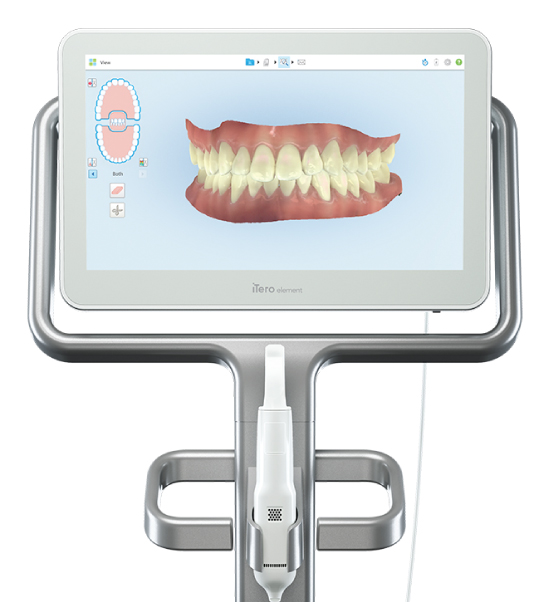
Oral health check
Many people tend to go to the dentist when they already have a toothache. causing a lot of expenses for treatment In fact, everyone can handle it. Or it can be easily prevented by having an oral health check every 6 months or at least every 1 year.

Oral health check What does the doctor do?
In addition to the doctor visually examining There will be scaling and cleaning of teeth. And the gums too Normally, it is recommended that teeth should be checked and scaled every 6 months to 1 year. For patients who are prone to tooth decay, Have gum disease May need to be checked every 3 months. In addition, X-rays to check for lateral tooth decay are important. Because the sides of the teeth are close together or next to each other. The doctor will not be able to see the tooth decay.
Dental x-ray
A dental examination with the naked eye may not be enough to reveal abnormalities in every tooth. Many times I have looked in the mirror and found nothing wrong. But actually, when the dentist takes an x-ray of the tooth, Instead, you can see the location where the tooth decay is hidden.
It is another process to carefully examine the health of the teeth and find abnormalities in every tooth. Through radiographs so that the doctor can see images of the structure of the teeth from the part beyond the gums and under the gums. Including for storing dental health history information of service recipients. and also used for planning orthodontic treatment Dental implants or various denture work

Itero element 5D
The iTero Element 5D is Teeth scannerthat can capture real-size images of teeth, size, and shape. Makes it possible to design 3D models with precision. It only takes 10-15 minutes to scan. It can be connected to the Invisalign system to send a tooth model to the clear braces planning process. and produce workpieces quickly Scan results can be sent to a lab to produce dentures. Immediately crown the tooth Saves time waiting for workpieces.

Scrape away tartar.
Target stains Caused by the accumulation of plaque in the mouth. That comes from food scraps that turn into plaque that clings to the edges of the teeth next to the gums. When there is a lot of accumulation, it will look like a plaque. and clings tightly to the teeth, which causes various problems such as gingivitis Scaling should be done every 6 months to prevent gingivitis.
Does scraping off tartar hurt?
Most of the time, when scraping tartar, teeth are more sensitive than pain. And the level of sensitivity, more or less, depends on oral and dental health. If there is pain, it is caused by a large amount of tartar that sticks between the teeth. and there may be bleeding during treatment If there is severe pain, the dentist will consider using anesthetic as well. To relieve pain
Steps for scaling off tartar.
Step 1. The doctor will examine your overall dental health by using a small mirror to look around your teeth and gums to look for signs of gingivitis. or other dental health problems
Step 2. The doctor will start using tools to scrape away the tartar. The patient may hear a scraping sound. Whether or not this will take a long time depends on the amount of limestone.
Step 3. After scraping off all the tartar. The dentist will use an electric brush head to clean and remove any tartar that remains after scraping away.
Step 4. The doctor will use dental floss to help determine if there are any areas between the teeth or any parts of the gums that have problems. At this stage, the gums may bleed if the gums in the area are very weak or inflamed. After that, the patient gargles and the scaling is complete.
Airflow
Removing stains with the Airflow machine is different from scaling. Because it has a different working style, the Airflow machine removes stains using 3 powers: water pressure, air pressure, and small molecule abrasive powder. Helps wash away stains stuck on the tooth surface, such as tea, coffee, cigarette, fruit juice, or dark-colored food stains without harming the tooth surface.

Tooth filling
Dental fillings are a type of tooth restoration. Using dental filling materials to fill in the missing parts. To maintain the original tooth shape and be able to use it normally Helps remove decayed tooth pulp and prevent it from spreading. Restoring lost tooth pulp
Preparation before tooth filling
- Should have good physical health, eat enough food and sleep.
- If you have a congenital disease and have medicine to take regularly, you should eat food and medicine as usual.
- Children should be treated 2 hours after eating to prevent vomiting.
- People with high anxiety. Or those who are unable to cooperate with treatment, the dentist may consider treatment under general anesthesia.

ประเภทการอุดฟัน
- การอุดฟันด้วยวัสดุอมัลกัม (สีโลหะ)
- การอุดฟันด้วยวัสดุคอมโพสิต (สีเหมือนฟัน)
ข้อดีของการอุดฟัน
ลดการลุกลามและลดอาการเสียวฟันช่วยเสริมเนื้อฟันในส่วนที่หายไปให้กลับมาแข็งแรงและใช้งานได้อีกครั้ง ใช้เวลาในการรักษาไม่นาน

คำแนะนำหลังการอุดฟัน
- ควรหลีกเลี่ยงการใช้ฟันเคี้ยวอาหารแข็งเพื่อป้องกันการแตกของวัสดุอุด
- อาจมีอาการเสียวฟันเมื่อรับประทานอาหารที่ร้อนจัดหรือเย็นจัดภายหลังการอุดฟันควรหลีกเลี่ยงอาหารแข็งภายใน 2-3 สัปดาห์
- หากมีอาการเจ็บฟันเวลาเคี้ยวภายหลังการอุดอาจเกิดจากวัสดุอุดฟันสูงเกินสามารถกลับมาให้ทันตแพทย์ช่วยแก้ไขให้ได้
- หากวัสดุอุดฟันหลุดให้กลับมาอุดใหม่อย่าปล่อยทิ้งไว้เพราะอาจเกิดฟันผุลุกลามได้
- ควรทำความสะอาดฟันด้วยการแปรงฟันให้ถูกวิธีและใช้ไหมขัดฟันอย่างสม่ำเสมอ
- ควรพบทันตแพทย์เพื่อตรวจสุขภาพช่องปากทุก 6 เดือน

Pediatric Dentistry
The doctor will give advice on treatment. and prevent oral and dental health problems for children and mothers From birth to approximately 12 years of age, such as tooth polishing, fluoride coating, and teaching how to brush teeth for children. Dental sealants prevent tooth decay. In addition, some children require treatment such as tooth filling, cavity treatment, tooth crowns in cases of extensive tooth decay, tooth extraction, X-rays, and dental check-ups. Wearing dental appliances or expanders Space for permanent teeth












